Colloquia for Spring 2014
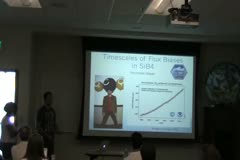
Timescales of CO2 biases in SiB4
July 31, 2014
Nicholas Geyer, Colorado State University
Hosted by CMMAP
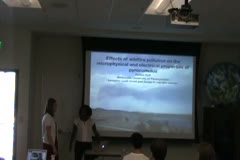
Effects of wildfire pollution on the microphysical and electrical properties of pyrocumulus
July 31, 2014
Renee Duff, Millersville University
Hosted by CMMAP
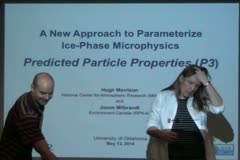
A new approach for parameterizing cloud microphysics based on the prediction of ice-phase particle properties
May 28, 2014
Hugh Morrison
Hosted by Sue van den Heever
The representation of cloud microphysics continues to be a source of uncertainty in atmospheric models. Traditionally, microphysics schemes partition ice-phase particles into pre-defined categories with prescribed bulk characteristics. This approach, used in nearly all existing schemes, is intrinsically restrictive and imposes the need for conversion between categories, which is poorly…
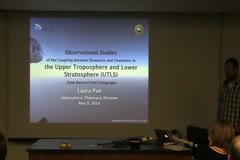
Observational Studies of the Coupling between Dynamics and Chemistry in the Upper Troposphere and Lower Stratosphere (UTLS) from Recent Field Campaigns
May 09, 2014
Laura Pan
Hosted by Thomas Birner
The upper troposphere and lower stratosphere (UTLS) is a region of complex dynamical, chemical and radiative characteristics, with strong gradients in trace species and enhanced climate sensitivity to changes in water vapor, ozone, aerosols and clouds. The observational studies of this region highlight the complementary relationship between dynamical meteorology and atmospheric chemistry. The…
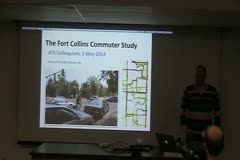
Air Pollution and You: The Fort Collins Commuter Study
May 02, 2014
John Volckens
Hosted by Jeff Pierce
The Volckens group conducts research on air pollution at the interface of engineering and public health. In this talk, I will present preliminary results from the (ongoing) Fort Collins Commuter Study, a 5-year project funded by the National Institutes of Health, that aims to improve our understanding of exposures and health effects from traffic-related air pollution. The daily commute, whether…
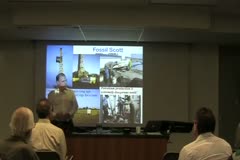
Revisiting the Rectifier: How CALIPSO LIDAR Data Help Quantify the Global Carbon Budget
April 25, 2014
Scott Denning
Hosted by -
About half the CO2 emitted by burning fossil fuels is removed from the atmosphere by sink processes, dramatically reducing the rate of accumulation, but quantifying and predicting future sink behavior (especially on land) has proved difficult. Measurements of small variations in atmospheric CO2 are an important source of information about sinks, requiring an accurate account of the influence of…
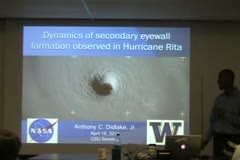
Dynamics of secondary eyewall formation observed in Hurricane Rita
April 18, 2014
Anthony C. Didlake, Jr.
Hosted by Emily Fischer
During the lifetime of some intense tropical cyclones (TCs), rainbands in the inner core of the storm coalesce to form a ring of convection around the pre-existing eyewall. The formation of this ring, known as the secondary eyewall, is followed by characteristic changes in storm intensity and structure known as an eyewall replacement cycle. While the general behavior of secondary eyewalls is…
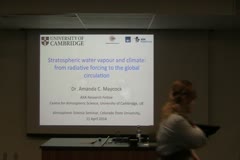
Stratospheric water vapour and climate: from radiative forcing to the global circulation
April 11, 2014
Amanda Maycock
Hosted by Dave Thompson
None given.
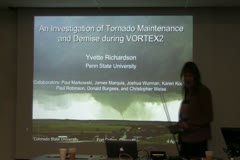
An Investigation of Tornado Maintenance and Demise Using VORTEX2 Observations
April 04, 2014
Yvette Richardson
Hosted by Sue van den Heever
The second Verification of the Origins of Rotation in Tornadoes Experiment (VORTEX2), carried out in 2009 and 2010, was designed to obtain simultaneous observations of wind and thermodynamic fields within tornadic and nontornadic supercells using an armada of instrumented vehicles and mobile radars. In addition to understanding tornado formation, VORTEX2 scientists also hoped to learn more…
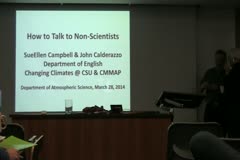
How To Talk To Non-Scientists
March 28, 2014
John Calderazzo and Sue Ellen Campbell
Hosted by Scott Denning and Russ Schumacher
None given.
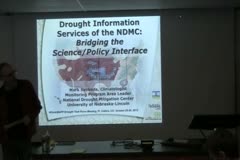
Tracking and Talking Drought in a Changing Climate
March 07, 2014
Mark Svoboda
Hosted by Scott Denning
No abstract submitted.
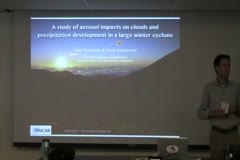
A study of aerosol impacts on clouds and precipitation development in a large winter cyclone
February 28, 2014
Greg Thompson
Hosted by Russ Schumacher
Aerosols influence cloud and precipitation development in complex ways due to myriad feedbacks at a variety of scales from individual clouds through entire storm systems. This paper describes the implementation, testing, and results of a newly-modified bulk microphysical parameterization with explicit cloud droplet nucleation and ice activation by aerosols. Idealized tests and a…
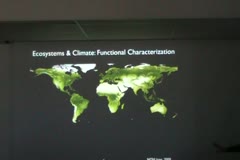
Ecoclimate Teleconnections: remote effects of the interactions between ecosystems and climate
February 21, 2014
Abigail Swann
Hosted by Emily Fischer
In this talk I will show that large-scale afforestation in the northern mid latitudes warms the Northern Hemisphere and alters global circulation patterns in climate model experiments. An expansion of dark forests increases the absorption of solar energy and increases surface temperature, particularly in regions where the land surface is unable to compensate with latent heat flux due to water…
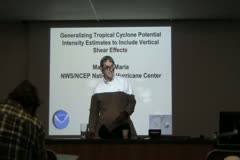
Generalizing Tropical Cyclone Potential Intensity Estimates to Include Vertical Shear Effects
January 24, 2014
Mark DeMaria
Hosted by Wayne Schubert
Empirical and theoretical methods have been used to estimate the upper bound on tropical cyclone maximum winds, which is often referred to as Potential Intensity (PI). Perhaps the most well known PI formulation is the one developed by Kerry Emanuel, which provides an upper bound intensity estimate using a Carnot heat engine framework. That theory results in an equation for PI as a function of…
